Why some sharks can't afford to stop swimming?
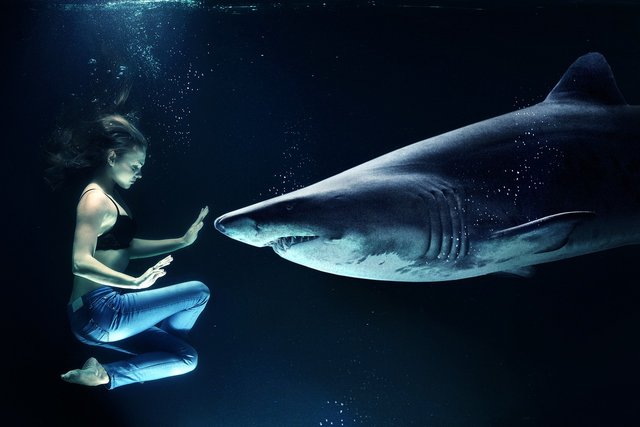
Seeing a documentary on sharks for just less than thirty minutes, has left me with a lots of questions on my mind. The researcher made mention of a peculiar statement that left me in a state of awe and of course baffled, hoping to get an instant explanation on how it appears to be that way. What was the statement, I know you will be wondering, right? He said "In order for sharks to survive, they need to move continuously". Can you imagine that? What do you think would happen to any animal that never stop moving from stage of birth to very last stage of its life? Don't they get tired? Do they even sleep at all?
Though subsequent research I did afterward, made me realized that he wasn't referring to all sharks in general but let say like around 24 species out of the totally known species, to name a few; the great white, whale, mako, hammerhead and many more, have to keep moving about in order to survive and also not to sink. Did you heard me say sink? I said to myself why would a shark sink when it is not a stone or any solid materials that has a density greater than the density of water. It is a fish for cry out loud!
You see that is the thing, sharks indeed do have a density greater than that of water, in fact all fishes does, so technically they should sink. How then are they able maintain buoyancy in water without sinking? These are some of the questions I intend to prepare answers for in this post and to share with you some of the knowledge about sharks I have acquired over the weeks. So, sit down relax on this one as I take you on the shark tale. Shark tale! Huh! That is a title of an interesting animated movie I would love to see once again.
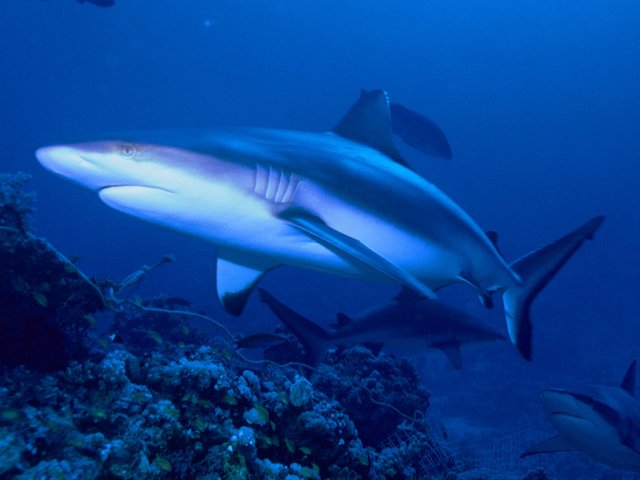
Shark unlike other fishes with bony structure, possesses a cartilagenous skeleton with almost all of them having a torpedo-shape like bodies that allows easy glide through the water. They belong to family of fishes known as elasmobranchii (fishes with no bone but cartilage only) with about 5-7 gills opening at the side of their head. One thing that amuses me most about them is their manner of swimming which usually involves them using their caudal fin (tail) to provide a thrust; turning their body in an S-shaped like curve with their head turning first and angling their pectoral fin to change direction. With over 470 known species ranging from the smallest (dwarf lantern shark with lenght of 7.9 inches) to the biggest shark (whale shark about 46ft long), most of them are known to be salt water dwellers except for rare cases where some species like the bull shark and the river shark are found to migrate into fresh water due to their ability to survive in both water bodies.
Being one of the top predator in the water body, they are found in almost all oceans and seas, even some in the rivers and lakes as well, with most of them turning out to be cold-blooded while other like the great white and Mako are partially warm-blooded since there is a need to raise their temperature about the water temperature during occasion like hunting where a short burst of speed is dispensed. Sharks like the angel shark, zebra shark and wobbegong shark live at bottom of the ocean's floor while others either live in the open or live in the deep water.
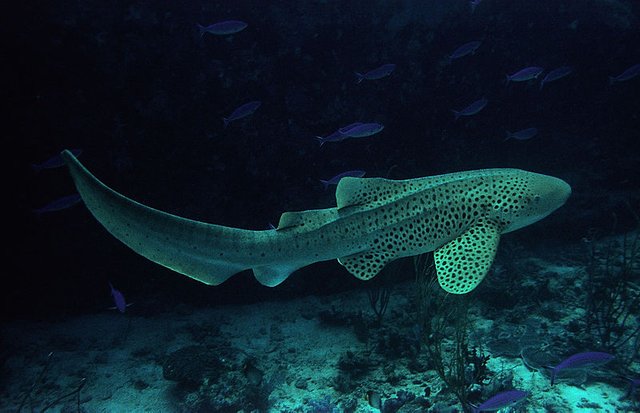
The shark anatomy has made its species more distinctive from all other fishes in the ocean as its features or should I say body parts, has giving it a unique predatory ability, feeding pattern, respiration, reproduction, communication skill and a whole lot more. Interested in learning more about the shark anatomy, feel free to access here cause I won't be going into full details of the entire anatomy but the ones important to the question I like to shed light to.

One of the main reasons why some sharks constantly needs keep move in water is to breath. Unlike other fishes, sharks do not have a covering (operculum) which serves as both passage for ejecting water out of their system and a protective cover for the gill. But instead, they employ a process known as ram ventilation which involves them swim continuously with their mouth open, allowing water to flow through their mouth and over their gills. Blood vessels within the gills filament then absorb oxygen from the water while the remaining water leaves the shark's body through the gill slit. Check out this post for a detailed information on how shark breath underwater by @crazy-daisy. Most of the common sharks that we are familiar with today, such the great white shark, whale sharks, salmon shark are obligate ram breathers; sharks that will suffocate and drown if they stop swimming.
However, there are some sharks that don't need to constantly swim to breath. They make use of their strong cheek muscle to pull in water into their mouth instead of swimming continuously. Also during the cause of hunting, they usaully bury every part of their body in the in the ground completely waiting for a prey to devour. A special inlet in their body (spiracle) draws in water during this period gor breathing. Angel shark, nurse shark to name a few, are some example of sharks that exhibit this type of breathing method commonly known as buccal pumping. Also there are other sharks (sand tiger shark) that switches in between these breathing methods.
Buoyancy! Another reason why sharks must constantly swim. The term ''buoyancy'' can be referred to as ability possessed by fishes or any substances to stay afloat either partially or fully in water. Understanding the concept of Archimedes's principles will give you a clear insight into why fishes will sink in water. However, they have special organs which prevent this from happening. In the case of bony fishes, they possess swim bladder, an internal gas-filled organ responsible for controlling change in different depth position and without having to waste energy on swimming of course. Sharks don't have this swim bladder but instead uses their skeleton, livers and fins to maintain their buoyancy.
25-30% of their body mass is made up of their liver which contains a natural oil (squalene) that has a specific gravity of 0.855 and low density; indicating that it is lighter than water. Owning to the properties of this compound, it has assisted them in maintaining their buoyancy to some extent. Likewise, their cartilaginous skeleton which is said to be half the density of bone also contributes greatly in prevent them from sinking as a result of their weight and also makes them more quick and active. Even with all these measures in place, sharks especially obligate ram swimmers still needs to move as these measures only reduces the energy used by the sharks to maintain their depth position while swimming.
Lastly, with the aid of their side and tail fins, they generate what is known as a dynamic lift. With their tail fin (caudal fin) providing thrust and speed needed to swimming, the fins (pectoral fin) underneath their belly generate the lift needed to stay afloat. This action is some what similar to what an airplane does with is wing.

Do they ever get tired of moving continuous?
Actually they don't. Do you know why? For one, they are cold blooded animal, and unlike we humans, they metabolised much differently; meaning less energy is expended. And also sharks have a way of conserving their energy through their pattern of swimming. Since most of them are negatively buoyant (sinks if they stop swimming), they expend more energy to swim at a slight upward angle for some time and afterwards then rest as they slow glides down and forward. So in short, no such thing as getting tired, only the economics involve in managing the amount of energy consumed to find food.
Do they sleep at all?
Yes they do, but not like the way we humans do. They tend to fall into a semi-unconscious state where certain functions in their body becomes slower and more calm while swimming and breathing but are not control of the position they are heading to. The ocean is a big place, so to encounter an obstacle along their path is rare and also being a shark, no fish will dare like to cross their path, awake or not.
I hoped you have being able to learn one or two things about sharks, till next time, keep steemit!

REFERENCES

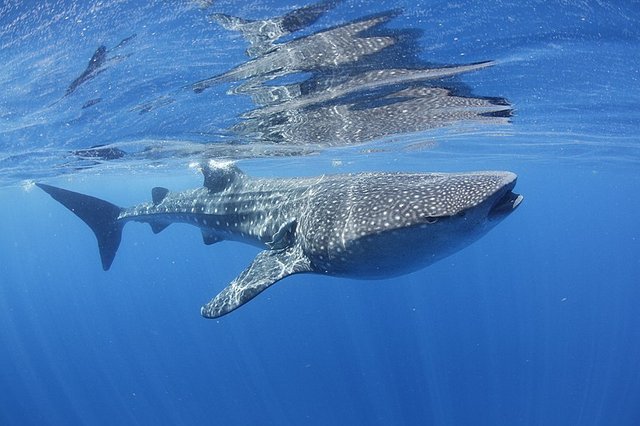
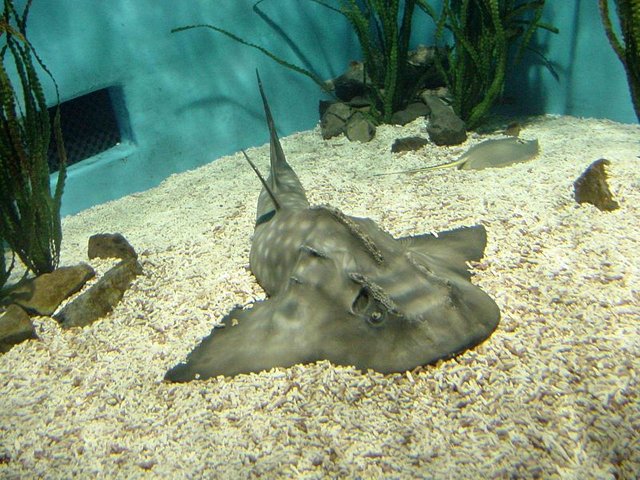
Limited Time << 10 STEEM >> AIRDROP
This is a limited time offer only for first 2000 members who join and get 10 steem.
JOIN NOW
This post has been voted on by the steemstem curation team and voting trail.
There is more to SteemSTEM than just writing posts, check here for some more tips on being a community member. You can also join our discord here to get to know the rest of the community!
WARNING - The message you received from @rijaldk is a CONFIRMED SCAM!
DO NOT FOLLOW any instruction and DO NOT CLICK on any link in the comment!
For more information, read this post:
https://steemit.com/steemit/@arcange/phishing-site-reported-steembottracker-steemrew-dot-ga
If you find my work to protect you and the community valuable, please consider to upvote this warning or to vote for my witness.
Hi @sunkanmi02!
Your post was upvoted by utopian.io in cooperation with steemstem - supporting knowledge, innovation and technological advancement on the Steem Blockchain.
Contribute to Open Source with utopian.io
Learn how to contribute on our website and join the new open source economy.
Want to chat? Join the Utopian Community on Discord https://discord.gg/h52nFrV